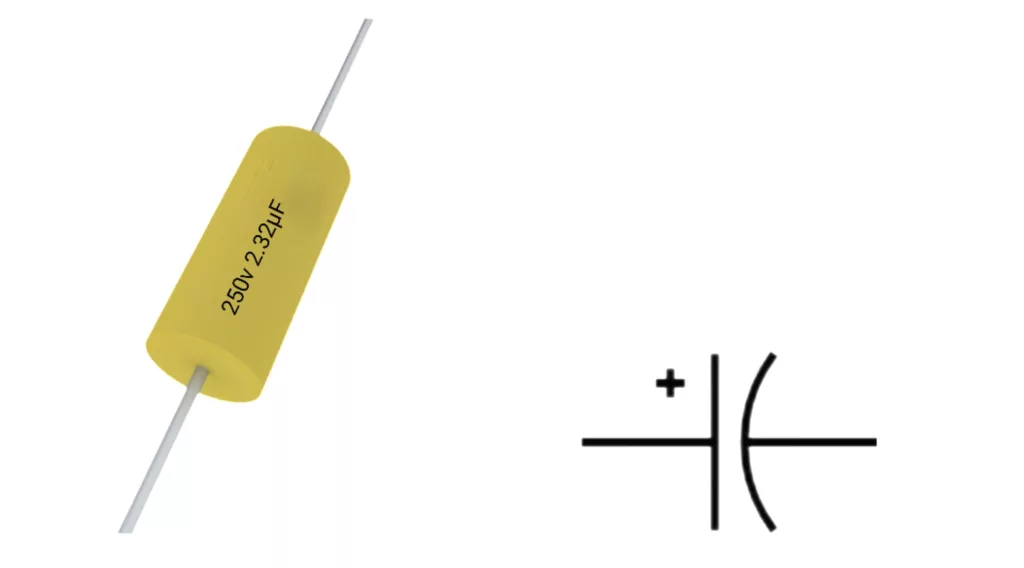Polarized and non-polarized capacitors are used in virtually every circuit, serving various purposes. Capacitors can be broadly categorized into two types: polar capacitors and non-polar capacitors. This short article explores the two types of capacitors, highlighting their differences and the unique benefits of using a non-polarized capacitor.
Polarity of a capacitor
The polarity of a capacitor refers to the distinct orientation of its terminals, typically marked as positive (+) and negative (-). This property is determined by the construction and internal structure of a component. Thus, recognizing the polarity of capacitors is fundamental for ensuring their proper integration into electronic circuits. Capacitors are broadly categorized into polar and non-polar capacitors.
What is a polarized capacitor?
A polarized capacitor is a capacitor with distinct positive and negative terminals. Consequently, its symbol in circuit diagrams typically includes a straight line representing the positive side and a curved line for the negative side. Common examples of polarized capacitors include electrolytic capacitors and tantalum capacitors.

In polarized capacitors, proper orientation is crucial for correct functionality within a circuit. Consequently, failing to connect a polarized capacitor correctly can lead to malfunctions, potential damage, or even failure of the capacitor itself. Figure 1 shows a polarized capacitor (tantalum capacitor) and its corresponding schematic symbol.
You can easily identify the terminals of a polarized capacitor by simply looking at the lengths of its leads. The longer lead is positive, while the shorter one is negative. Additionally, the capacitor’s body often features markings, such as a stripe or arrow, indicating the negative side. Ensuring the correct identification and connection of these terminals is crucial for the proper functioning of the polarized capacitor in an electronic circuit.
What is a non-polarized capacitor?

A non-polarized capacitor, in contrast to its polarized counterpart, lacks distinct positive and negative terminals. As a result, its symbol in circuit diagrams typically features two parallel lines, highlighting its symmetrical structure. Common examples of non-polarized capacitors include ceramic capacitors, mica capacitors, and film capacitors. Figure 2 shows mica capacitors and a non-polarized capacitor symbol.
Unlike polarized capacitors, non-polarized capacitors can be connected in any direction without compromising their performance. This flexibility in orientation simplifies their integration into circuits since no specific polarity considerations are required. In addition, this versatility makes them suitable for various applications and reduces the risk of malfunctions.




Pingback: A Guide to Characteristics and Uses of Silver Mica Capacitors -
Pingback: A guide to various tantalum capacitor types and their uses -